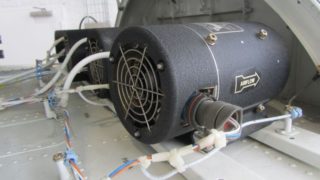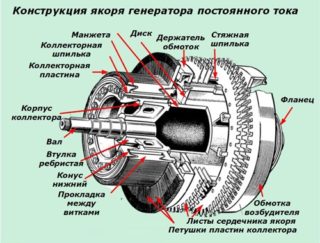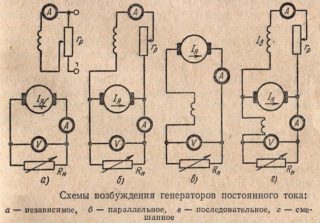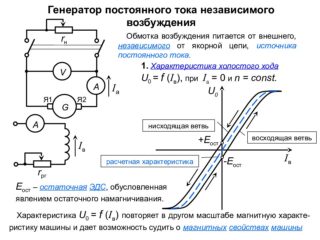A DC generator is an electrical equipment that produces a constant voltage. The device has a rather complex technical structure, which can be called the perfection of technical thought.
Operating principle

Each conductor is equipped with a magnet, at the ends of which a load is connected. When connected, alternating current flows continuously through them. The nature of its origin is explained by the fact that during operation the poles of the magnet are constantly changing places. The operation of an alternator is based on this principle.
So that the current does not change its direction, it is required to have time to connect the points of switching the load at a speed similar to the speed of rotation of the magnet. Only a controller, a small electrical device that consists of several conductive sectors separated by dielectric plates, can cope with the task at hand. It is fixed on the anchor of the device and rotates synchronously with it.
All these processes contribute to the formation of a pulsating voltage of the same magnitude at the output of an electrical installation. Several armature windings are used to smooth this ripple. The more they are installed, the less voltage surges at the output will be.
Characteristics and structure
The anchor is made of steel plates with small recesses, windings are placed in them. Their ends necessarily commute with the collector, which is made of copper plates separated by dielectrics. At the end of the assembly, the shaft, armature with windings and the collector become one.
The stator performs not only its direct function, but also is a housing, to the inner surface of which electric magnets and permanent ones are attached. The first option is preferable, their cores can be made of metal plates or cast together with the body. Also on the case there are special holes for attaching the current-collecting brushes.
The amount of graphite will vary depending on the number of magnet poles that the stator is equipped with. The number of brushes is equal to the number of pole pairs.
Electromotive force
The electromotive force of a DC generator or EMF is a quantity that is directly proportional to the flow of magnets, the number of active conductors and the frequency of rotation of the armature. With a decrease or increase in these indicators, it is possible to control the magnitude of the electromotive force and voltage. You can set the required parameters by adjusting the armature speed.
Equipment power and efficiency
Another important technical characteristic of the alternator is its efficiency. This concept is the ratio of useful power to total power.
At idle, the efficiency is zero, the maximum performance is achieved at nominal loads.In powerful innovative models of DC generators, the efficiency is close to 90%.
Varieties by the way of excitement
According to the excitation method, DC generators are divided into two types:
- self-excited;
- with independent excitation of windings.
For self-excitation of equipment, electricity is required, which it also generates. According to the principle of switching windings, self-excited armatures of alternators are divided into the following types:
- equipment with parallel excitation;
- sequential excitation devices;
- mixed-type generators, which are called compudnye.
To ensure optimal conditions for the operation of the equipment, a stable voltage is required at the terminals. The peculiarity of the device lies in the parallel excitation of the coil leads, which are connected through an adjusting rheostat located parallel to the armature winding.
For equipment with independent excitation, the power source is external devices or batteries. In low-power versions, permanent magnets are installed to create the main magnetic flux. The main advantage is that the terminal voltage is not affected by the exciting current.
Mixed excitation devices combine the positive qualities of the aforementioned varieties. Design features - two inductors, main and auxiliary. The parallel winding circuit includes a rheostat that is used to regulate the field current.
Application area

DC generators have a fairly extensive list of applications. It is actively used in almost all industries, especially in the automotive industry and in the construction of new generation Russian locomotives, which are equipped with asynchronous motors, characterized by operation on alternating current.
Also, electrical equipment can be used in everyday life for portable welding machines with an autonomous power system and for household appliances equipped with powerful starting motors.
Before buying, you should analyze what purposes the electrical equipment will have to cope with. Based on this, the most suitable modification of DC generators is selected.
You can purchase equipment in specialized stores or on Internet sites. When buying, it is important to check that you have all the necessary accompanying documentation and a warranty card. Preliminary, the integrity of the case and the presence of damage are also inspected: if there are any, it is better to refrain from buying. When buying online, you should carefully read the reviews about the store on various forums.













